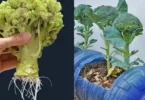A Guide to Growing Potatoes at Home in Containers
Introduction: Growing your own potatoes at home can be a rewarding and satisfying experience. Whether you have a spacious garden or a small balcony, container gardening offers a convenient way to cultivate this versatile and nutritious crop. In this article, we’ll walk you through the steps of successfully growing potatoes in containers, from selecting the right varieties to harvesting your delicious homegrown spuds.
1. Choosing the Right Potato Varieties: When it comes to selecting potato varieties for container gardening, consider those that are suitable for small spaces and have a shorter growing season. Some popular choices include fingerling potatoes, Yukon Gold, and Red Norland. These varieties are well-suited for containers and produce good yields.
2. Selecting Containers: Choose containers that are at least 10-15 inches deep and provide ample space for potato plants to grow. You can use various containers such as plastic buckets, fabric grow bags, wooden crates, or specialized potato grow bags. Ensure that your chosen containers have drainage holes to prevent waterlogging.
3. Preparing Seed Potatoes: Purchase certified seed potatoes from a reputable source. Avoid using grocery store potatoes, as they may carry diseases. To encourage sprouting, place the seed potatoes in a cool, dry, and well-lit area a few weeks before planting. Cut larger seed potatoes into smaller pieces, each containing at least one “eye” or sprout.
4. Planting: Fill the containers with a well-draining potting mix or a blend of compost and soil. Plant the seed potatoes with the sprouts facing upward, about 4-6 inches deep. Space them roughly 8-12 inches apart, ensuring that each piece has enough room to develop.
5. Care and Maintenance:
- Watering: Keep the soil consistently moist but not waterlogged. Avoid overwatering, as this can lead to rotting. Water when the top inch of soil feels dry.
- Fertilizing: Potatoes are heavy feeders. Consider using a balanced, slow-release fertilizer or adding compost to the soil before planting. Side-dress with additional fertilizer as the plants grow.
- Sunlight: Place your containers in a location that receives at least 6-8 hours of sunlight per day. If you’re growing potatoes indoors, consider using grow lights.
6. Managing Growth: As the potato plants grow, they will develop stems and leaves. Once the plants reach a height of 6-8 inches, begin “hilling.” Gently mound soil or straw around the stems to encourage tuber development and protect them from sunlight, which can turn them green and make them toxic.
7. Pests and Diseases: Keep an eye out for pests such as aphids, Colorado potato beetles, and slugs. Regularly inspect your plants and take appropriate measures, such as using insecticidal soap or natural predators. Rotating crops annually can help prevent soil-borne diseases.
8. Harvesting: Potatoes are ready for harvest when the plants have flowered and the foliage begins to yellow and die back. Carefully dig into the soil to retrieve your potatoes. You can start harvesting “new potatoes” earlier or wait until the plants have completely died back for larger, mature potatoes.
9. Storing Your Harvest: After harvesting, gently brush off excess soil and allow the potatoes to dry in a cool, dark place for a few hours. Store them in a cool, humid, and dark environment, such as a root cellar or a cool basement, to prolong their shelf life.
Conclusion: Growing potatoes at home in containers is a gratifying way to enjoy a fresh and nutritious crop. With the right varieties, containers, and care, you can successfully cultivate your own spuds, even in limited spaces. Whether you’re a seasoned gardener or a beginner, the process of planting, tending, and harvesting potatoes can provide you with a sense of accomplishment and a bountiful harvest.






